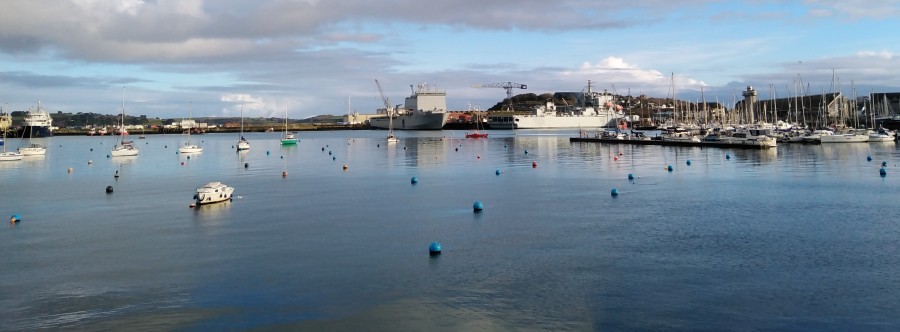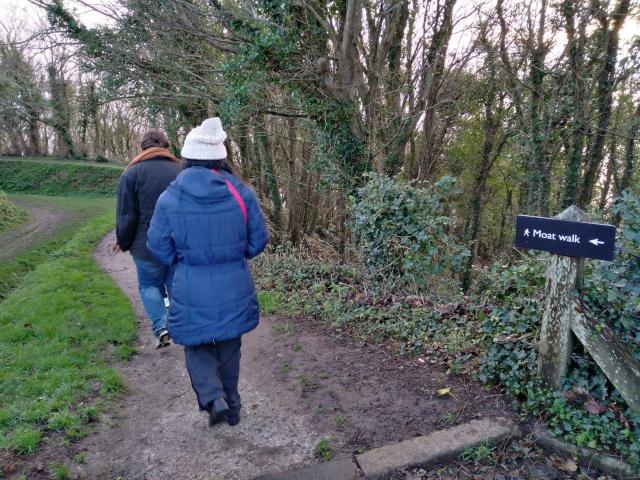On our 4th day in Cornwall, Claire suggested visiting Falmouth – a historic port and defensive site turned university town with an unmistakable hip, modern vibe.
26 December 2021
It started to drizzle just as we got into Falmouth around 1.00pm. From the Maritime carpark, we checked out the shops and restaurants near the National Maritime Museum, but none were open. Following the crowd to the main part of town, we were lucky to get a table at the second cafe we popped into.
Bustling harbour town
Nestled in a relatively sheltered bay on the south coast of Cornwall, Falmouth is famous for its harbour. Together with the stretch of water known as ‘Carrick Roads’, it forms the third largest natural harbour in the world, and the deepest in Western Europe.
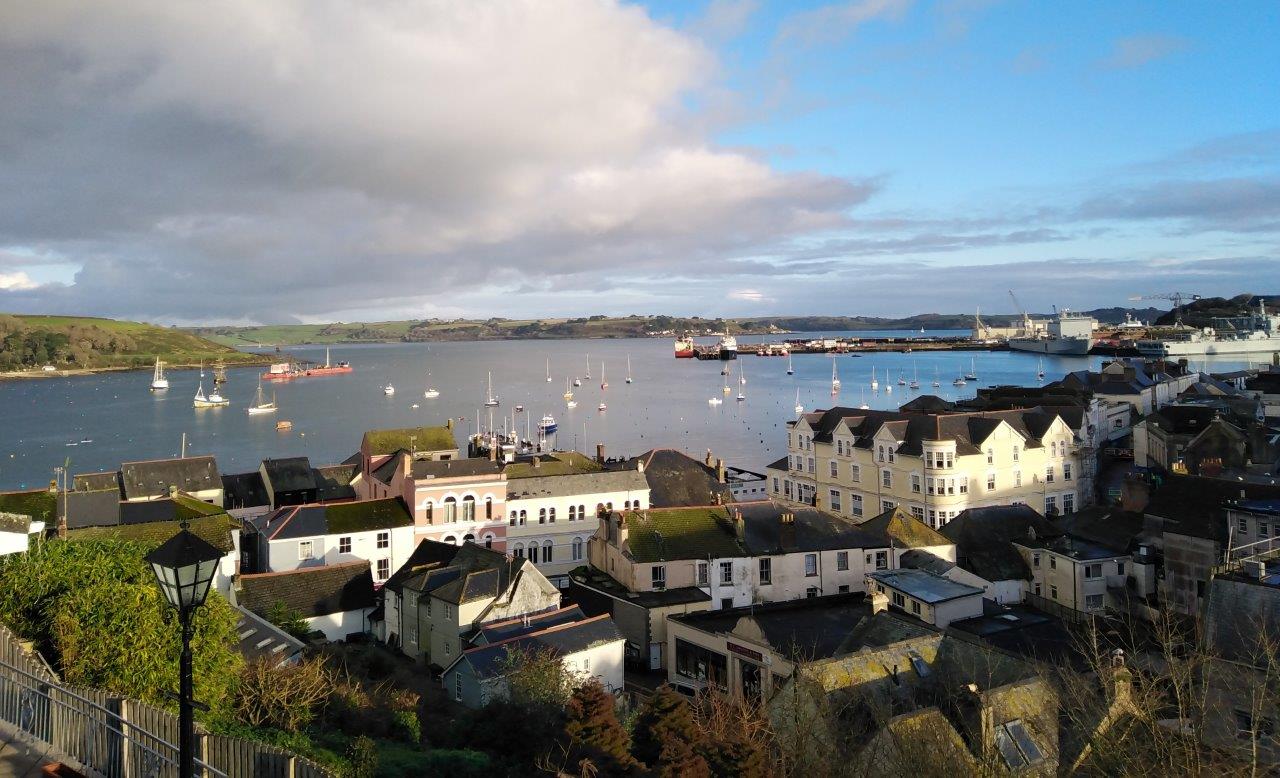
As the largest port in Cornwall, Falmouth Harbour is a bustling working port, home to a variety of sailing and fishing boats, local ferries and Royal Navy vessels.
The seafront is a picturesque scene of boats and seafront houses looking over the estuary.
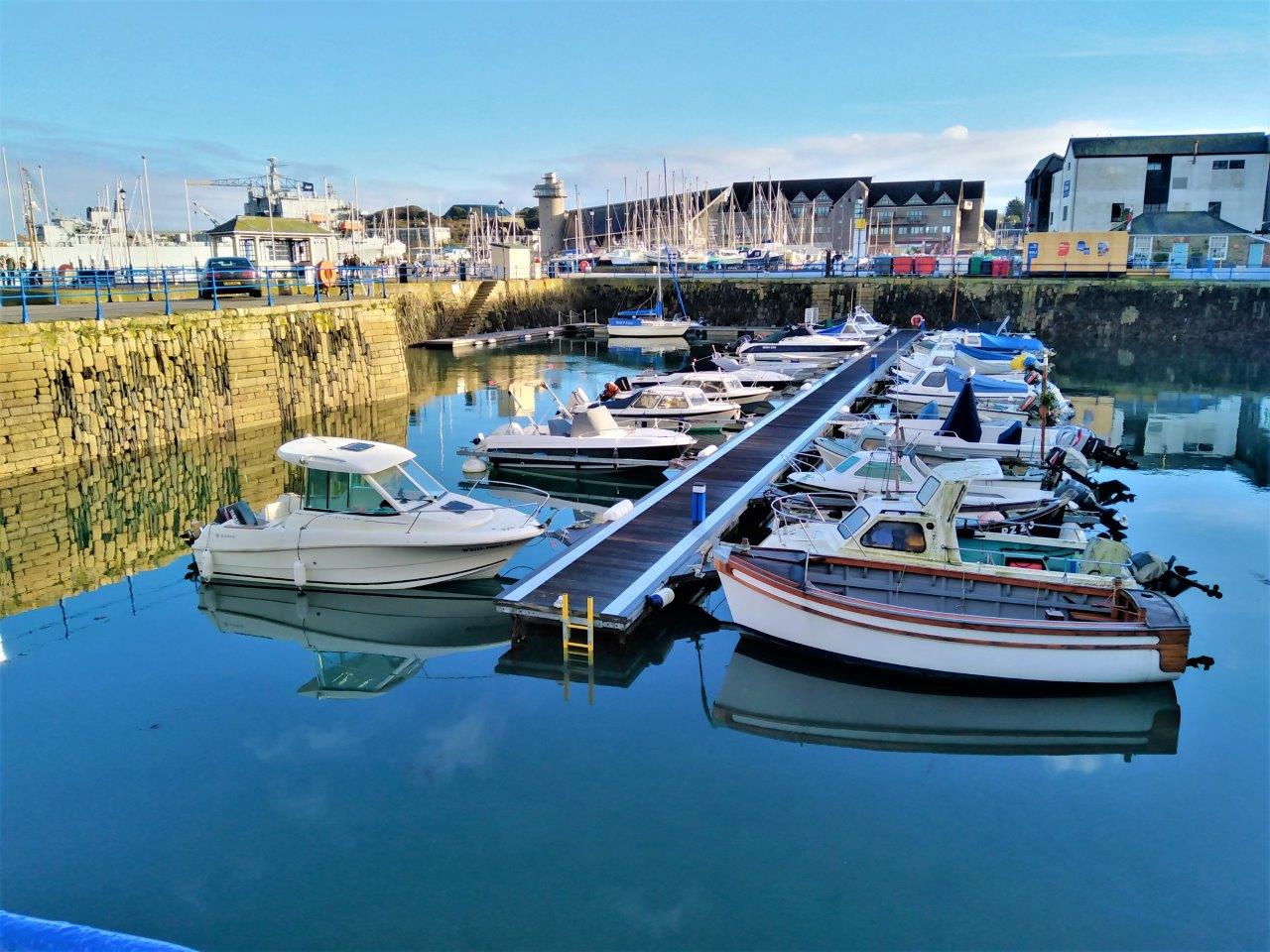
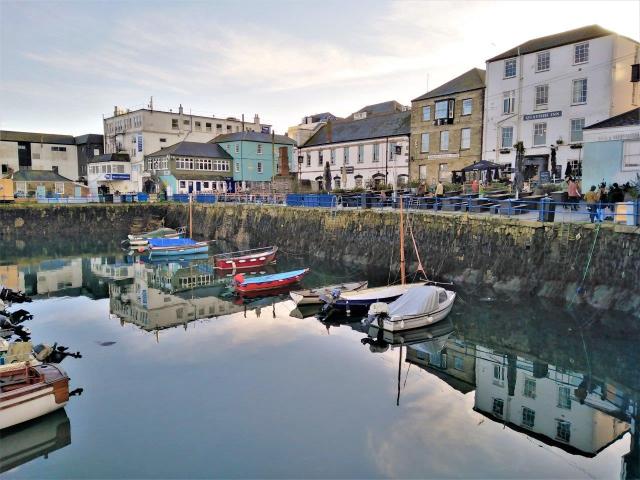
We spotted fishing boats in the old quay with its small granite harbour, next to a host of marinas with everything from pleasure cruisers up to super yachts.

There is also an industrial side with the docks catering for all size of ships including seriously huge, tall ships and ocean liners.

The pretty old harbour and docks on one side of town remains an active cargo port, for the bunkering of vessels and the transfer of cargoes.
Stroll the streets of Falmouth
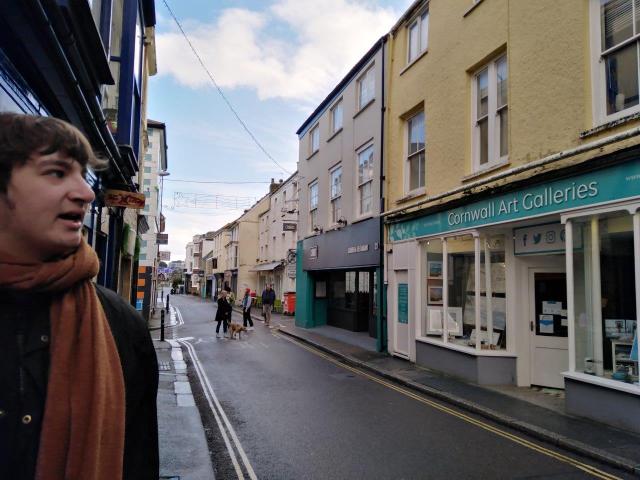
Falmouth’s network of streets offers a mix of eclectic independent stores and small high chain stores.
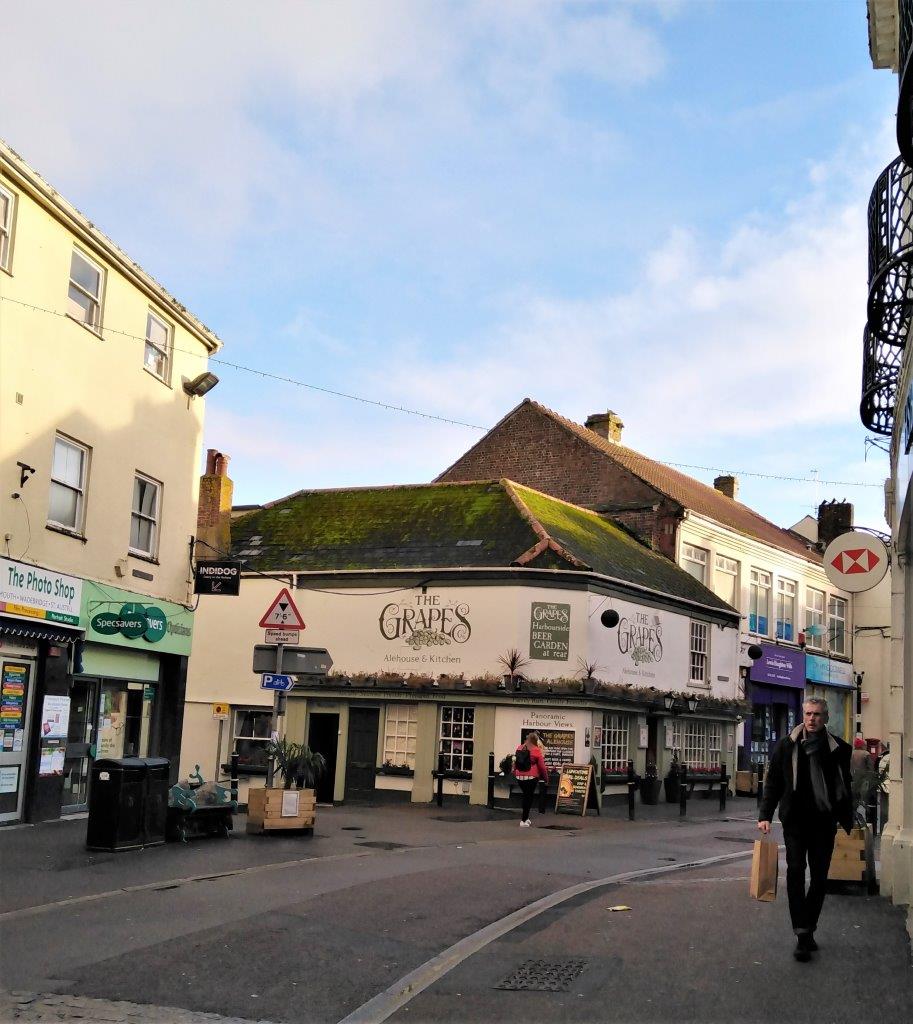
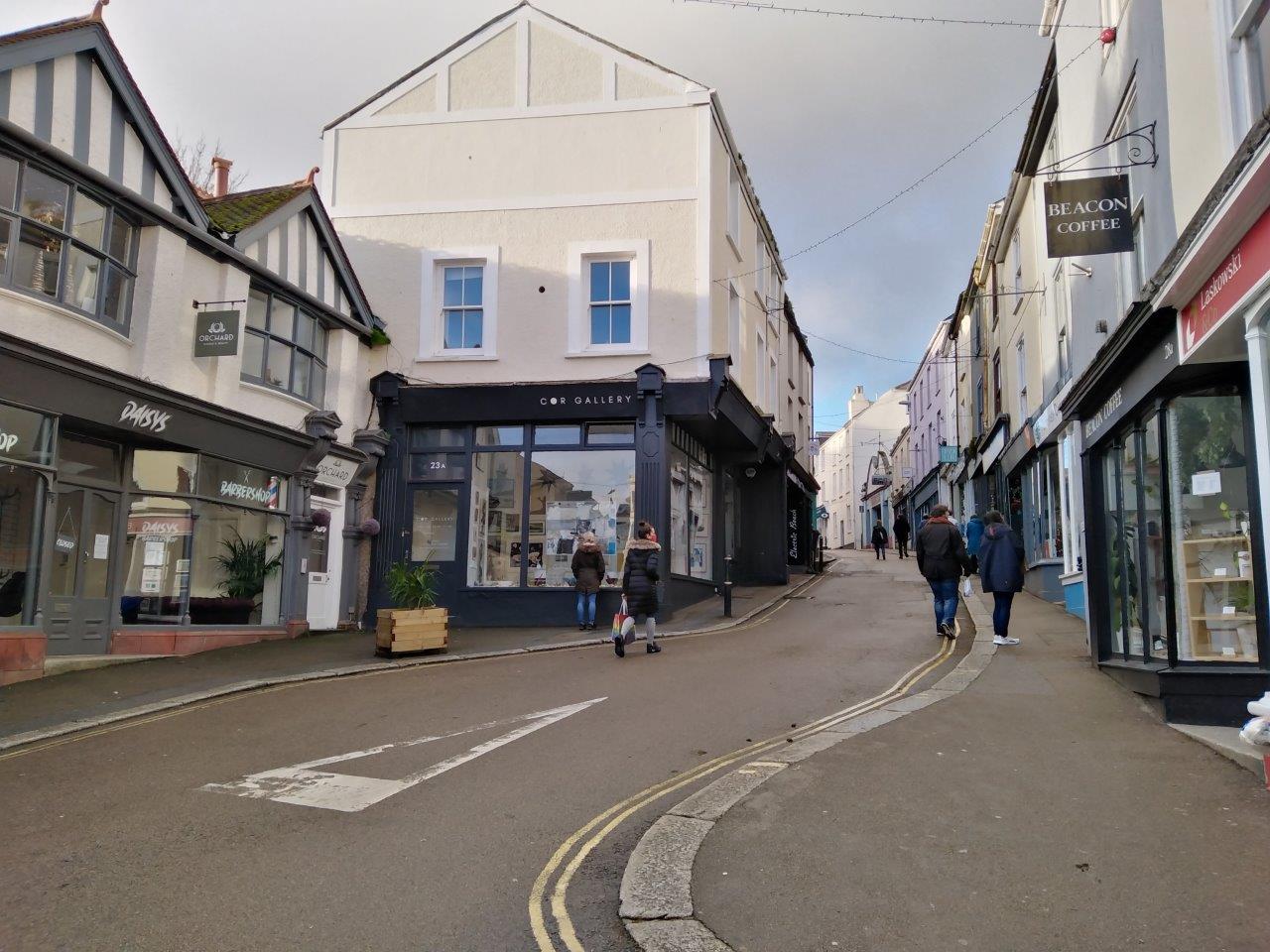
It was quite impossible to walk past the Cornish Bakery without taking a look inside and leave empty-handed.
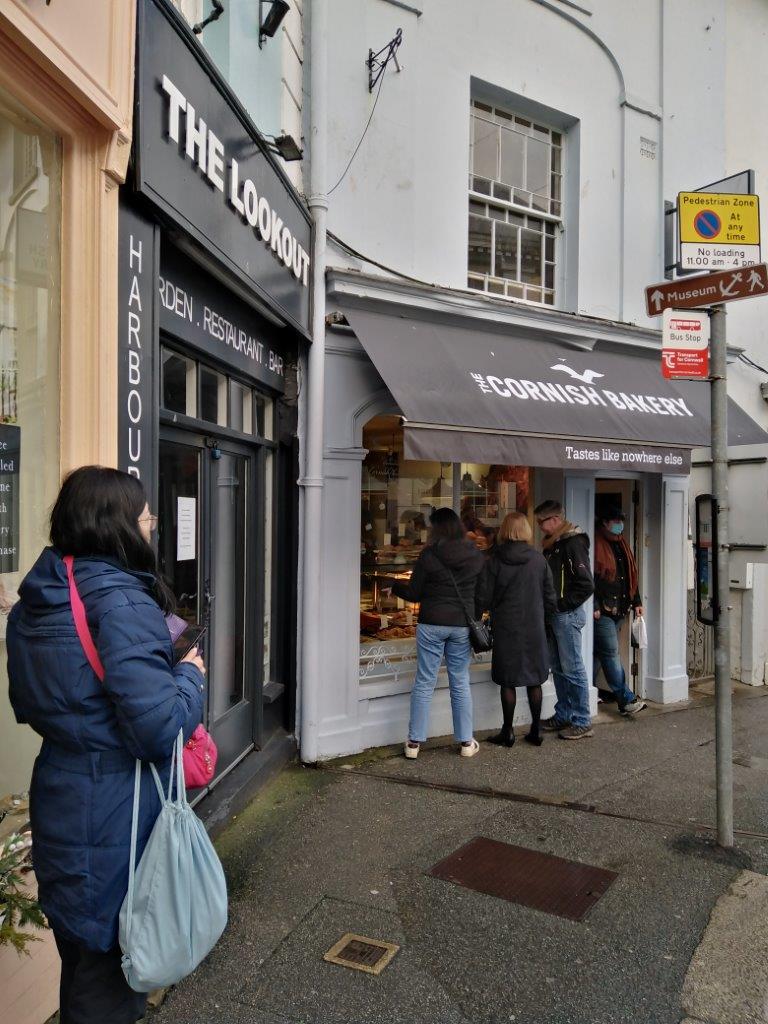

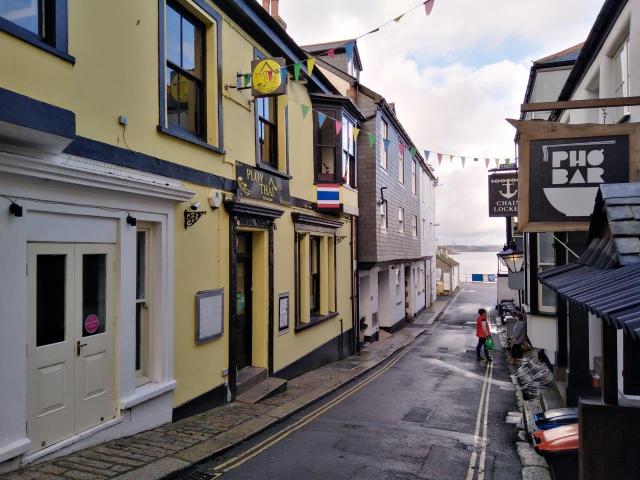
Tucked away in hidden narrow alleys are Cornish pubs and quaint restaurants serving Thai / Vietnamese cuisine.
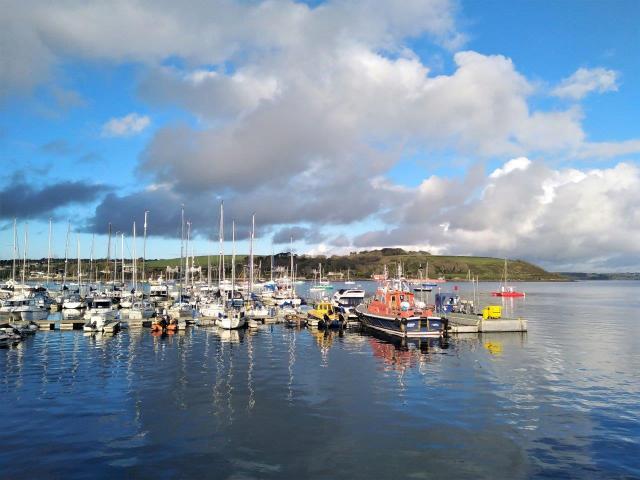
Irresistibly drawn to the water, my wandering feet unerringly headed down an alley to the docks and piers.
I spent a blissful half hour of quiet enjoyment, feasting my eyes on colourful boats bobbing gently in the amazingly calm bay.
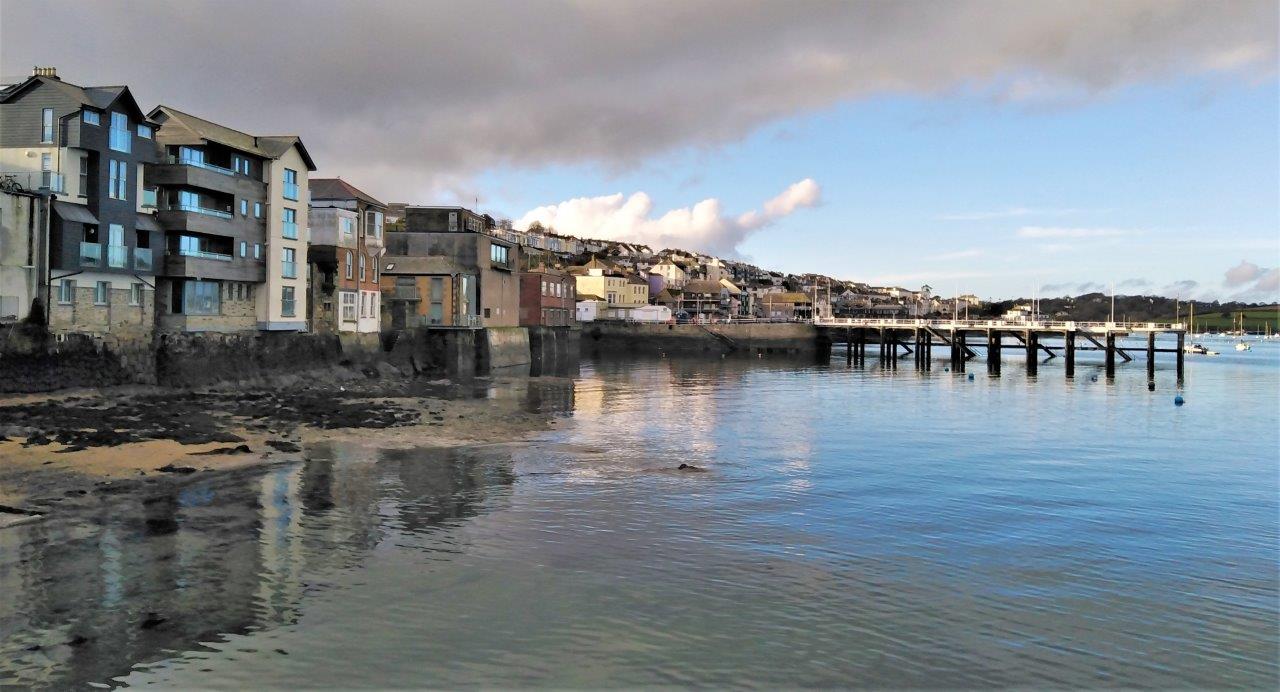
Resuming our exploration of Falmouth, we stayed on the main thoroughfare with multiple street names (Bar Rd/ Arwenack St / Church St/ Market St) to the main square. We continued a little further, then decided to turn back to check out the smaller side lanes. We made an unexpected discovery.
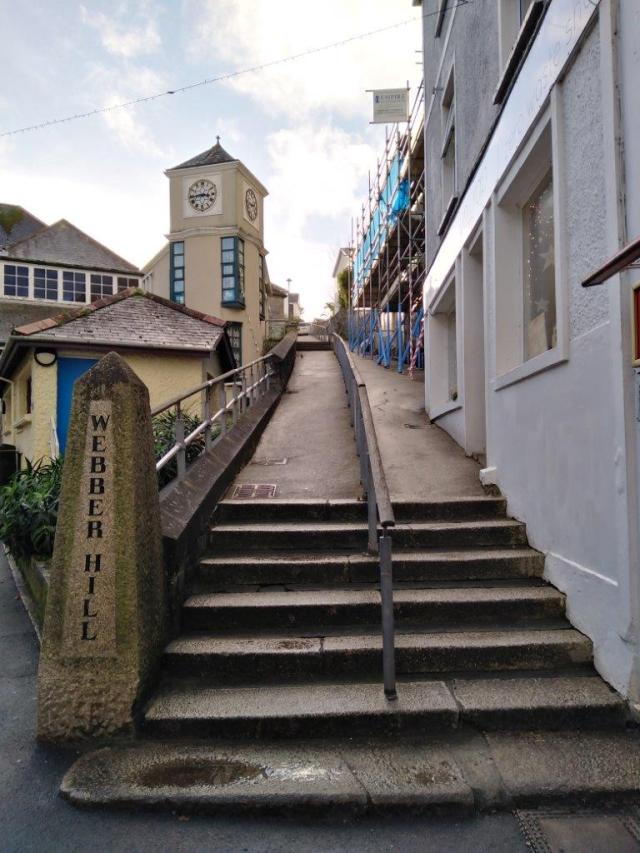
Jacob’s Ladder!
Though there are 111 granite steps to the top of Webber Hill, I did not feel them, as I was distracted by my surroundings on the way up.
The sweeping views of the harbour and estuary from the top are worth the climb.
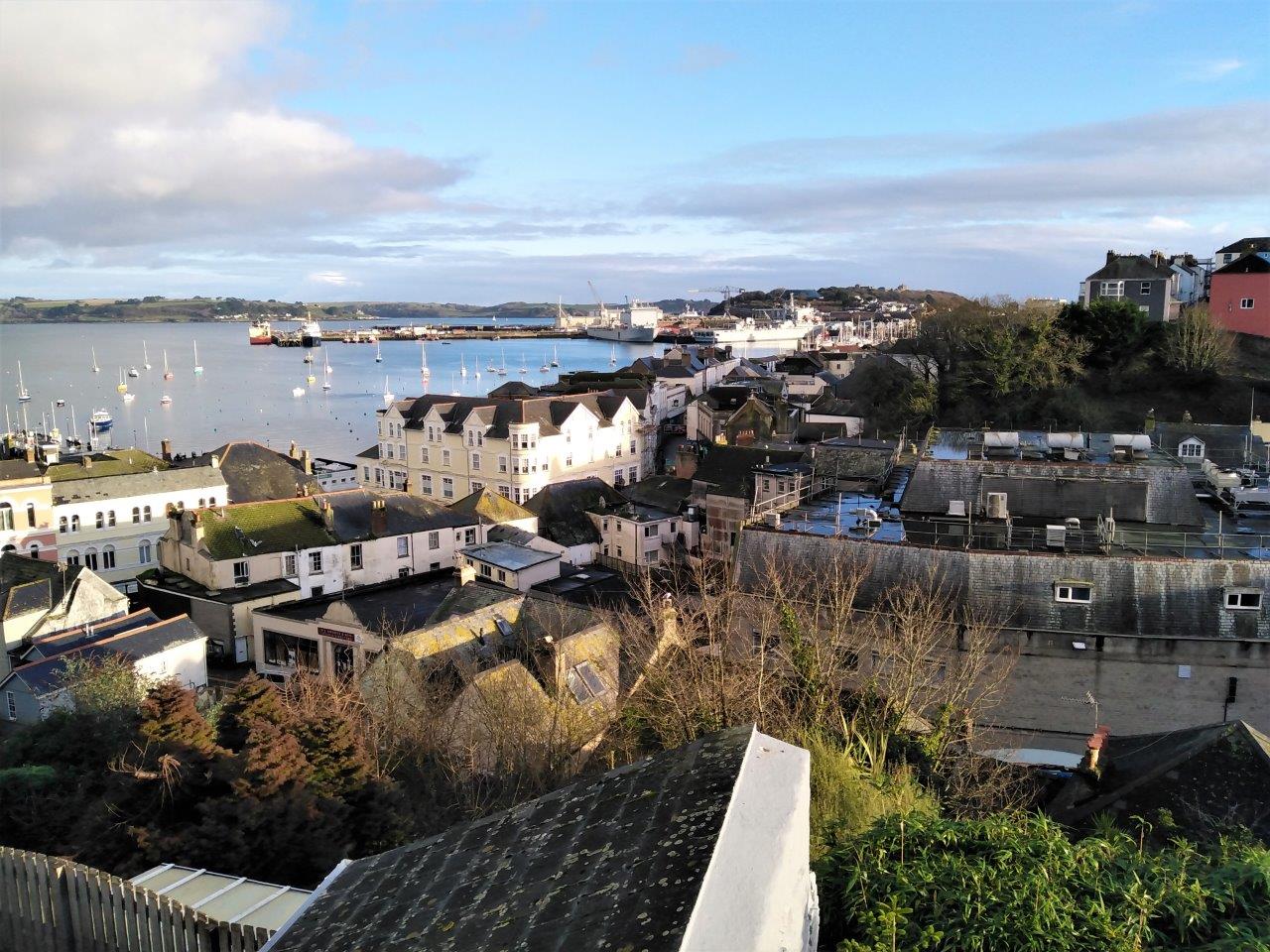
Pendennis Castle
Perched on a high, rocky and long headland, Pendennis Castle has a unique vantage point – surrounded by water on three sides with panoramic views of Falmouth Town, the estuary and the Cornish countryside.
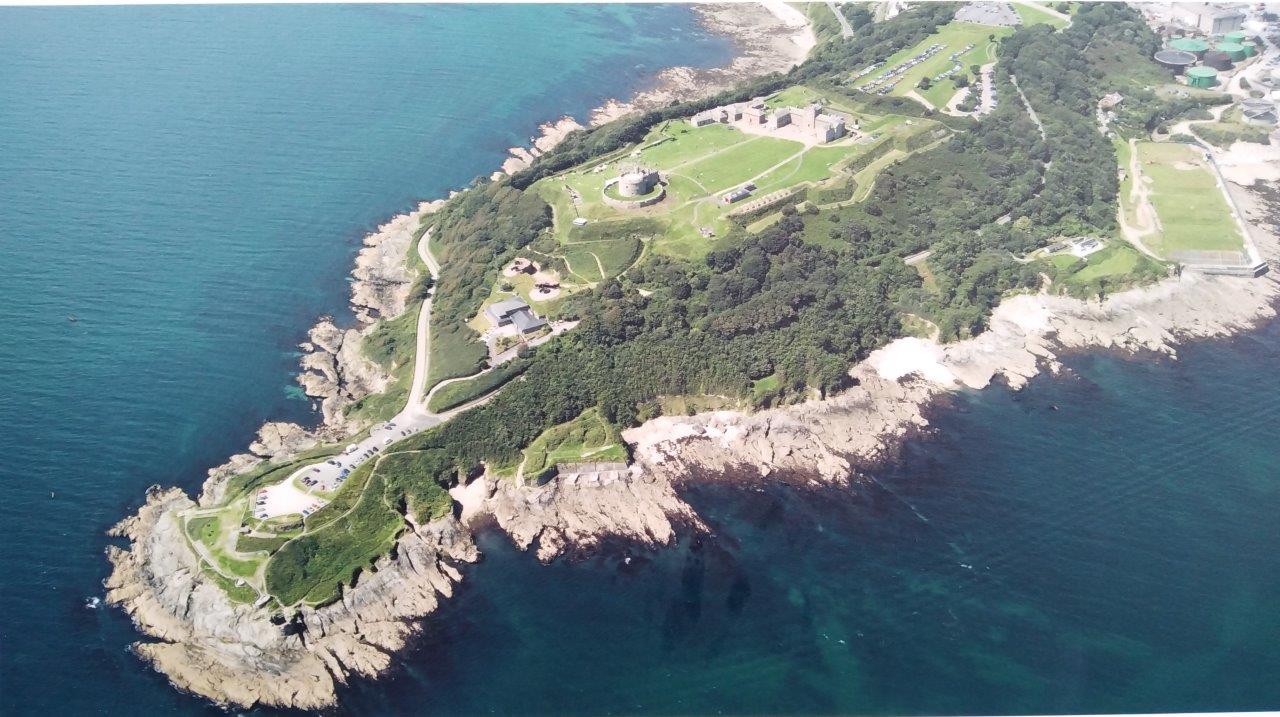
This most prominent Falmouth landmark and Cornwall’s largest fortress was built between 1539 – 1545 by King Henry VIII to guard the entrance to the River Fal on its west bank, near Falmouth.
The impressive 16th-century artillery fortress has defended Cornwall since Tudor times and played a vital role during the two World Wars. (As a secret army base during WW2 and had a Guardhouse with cells in WW1).
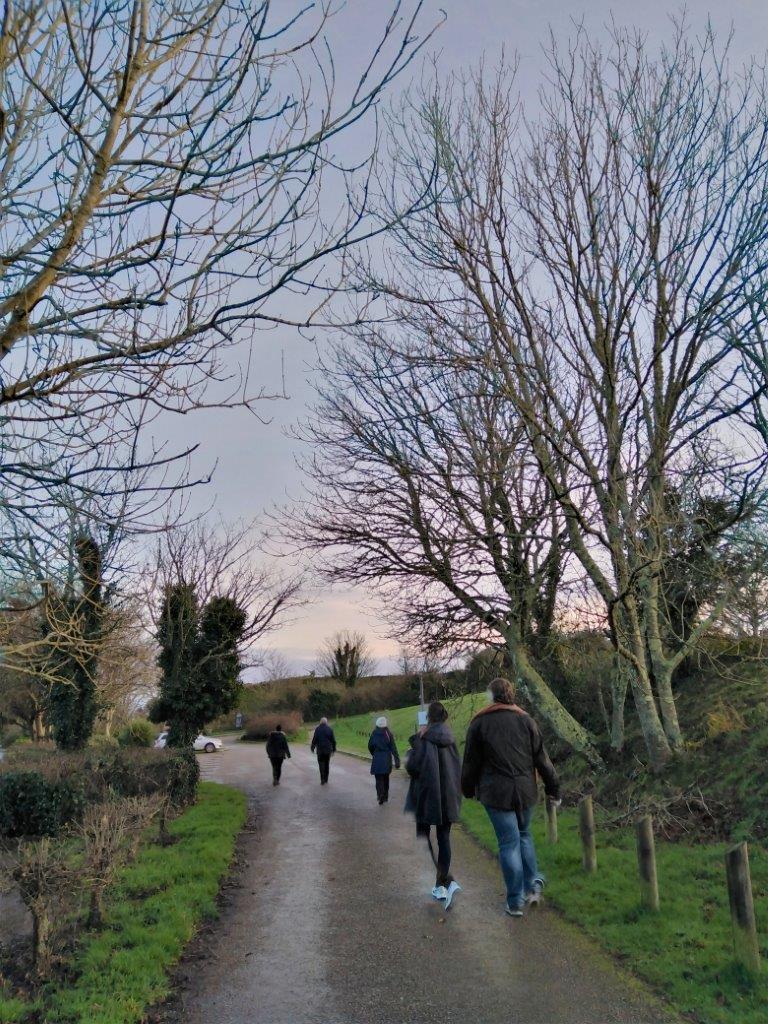
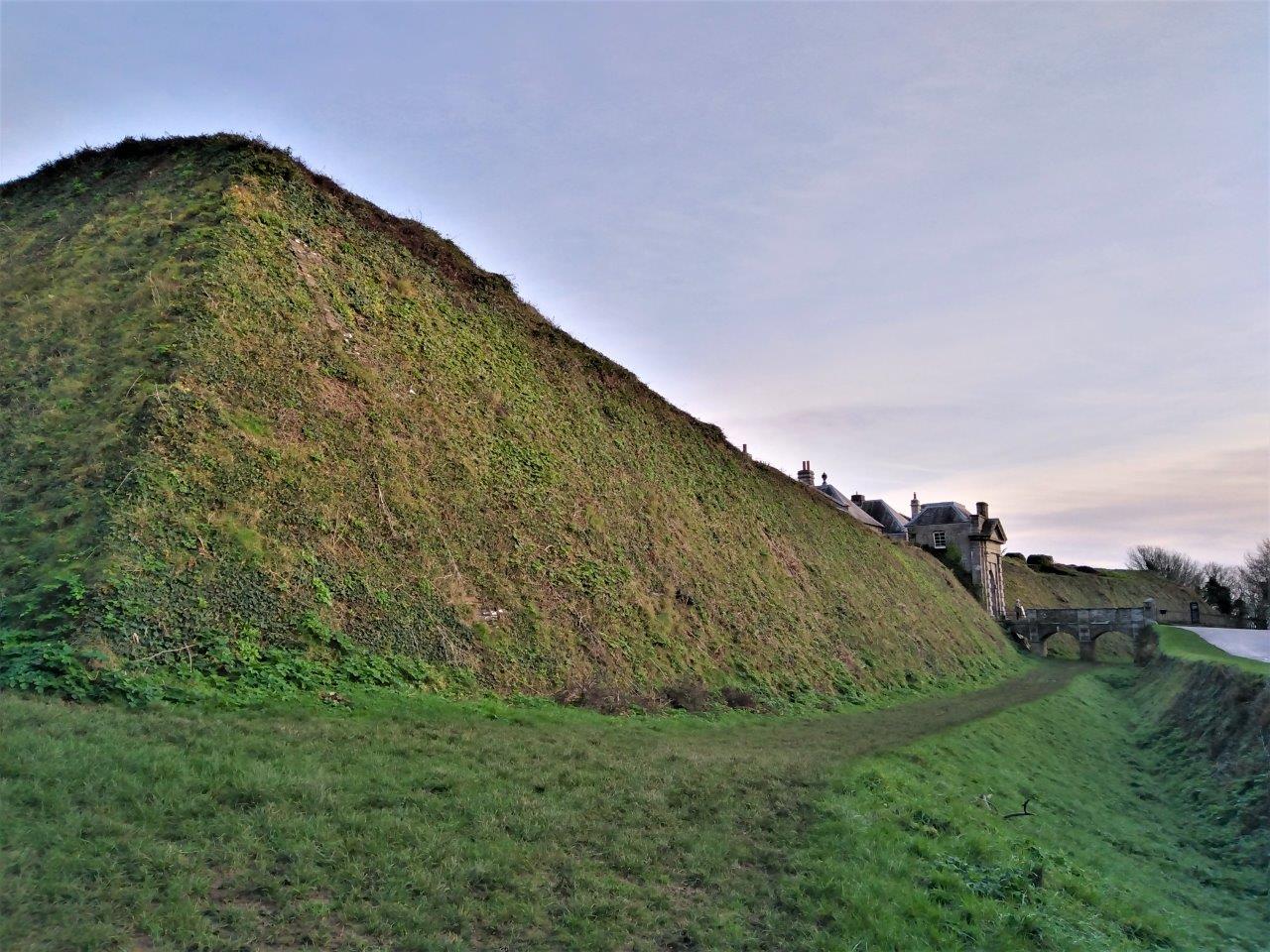
A tour of the castle typically takes 1.5 – 2 hours. Arriving at 3.30pm, we had missed the last entry. To lessen the disappointment of NOT wandering around a Tudor stronghold complete with medieval weapons, gun battlements and turrets, we did the next best thing.
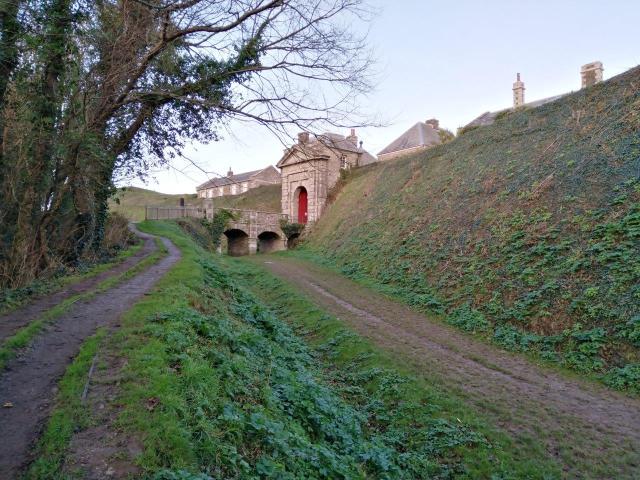
Built in 1700, the classically styled gatehouse is located on the western side of the ramparts with a mid-19th century stone bridge reaching across the external ditch.
The main feature of Pendennis is a circular keep with a gun platform surrounding it, to enable all-round fire from guns mounted at several levels.
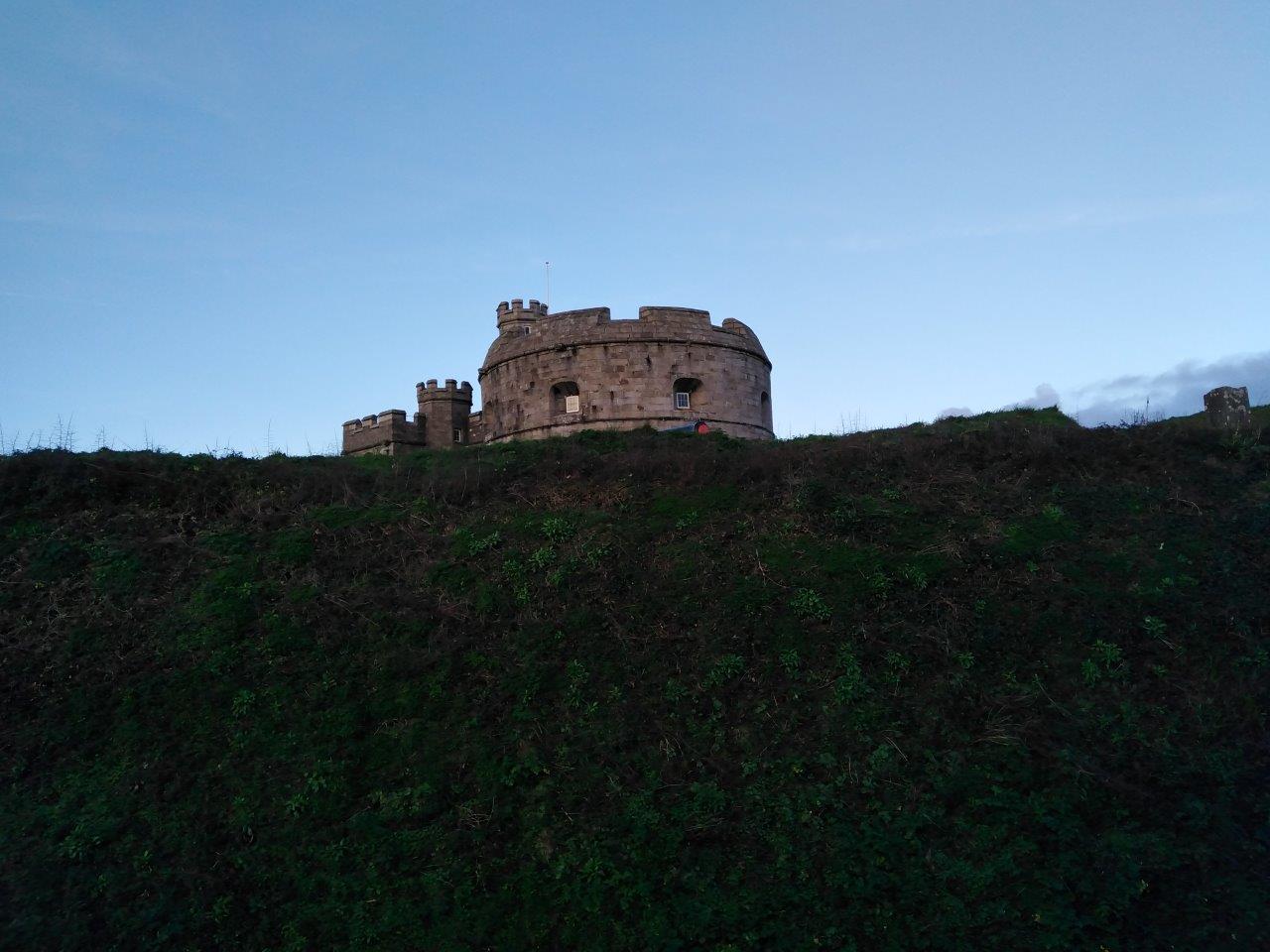
Ten minutes into the walk, the circular gun tower measuring 57 feet in diameter came into view. The gatehouse, ramparts and the building in front of it were added on by Elizabeth I.
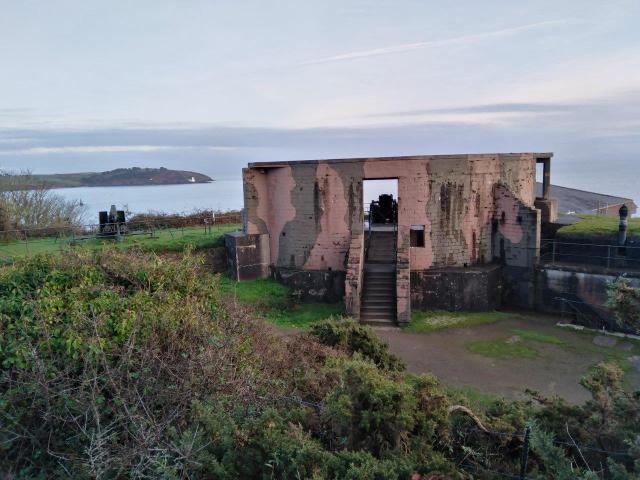
Next, we saw two crescent shaped structures at the south end of the peninsula.
Constructed in 1793, the Half Moon Battery is still accessible from the castle via tunnels.
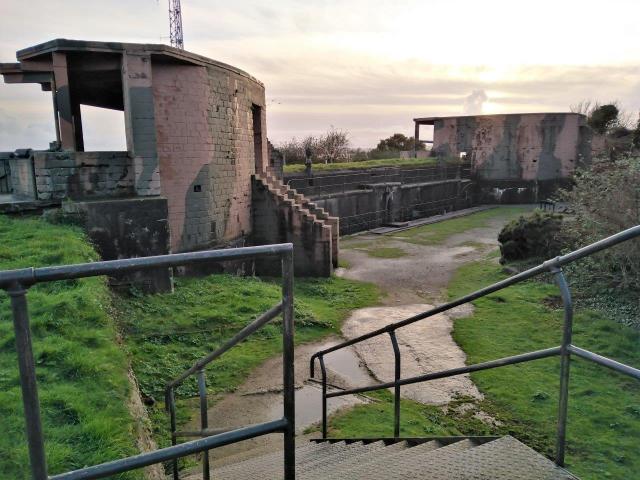
The camouflaged gun houses and 6-inch guns dates to the Second World War, when it was used to store ammunition.
The trail curved left sharply turning northwards, presenting unmissable views of Falmouth and the Carrick Roads waterway, on our right.
Positioned on each side of Carrick Roads, Pendennis Castle and its sister, St Mawes, were built as coastal fortresses to provide overlapping fire across the estuary to attack invading ships.
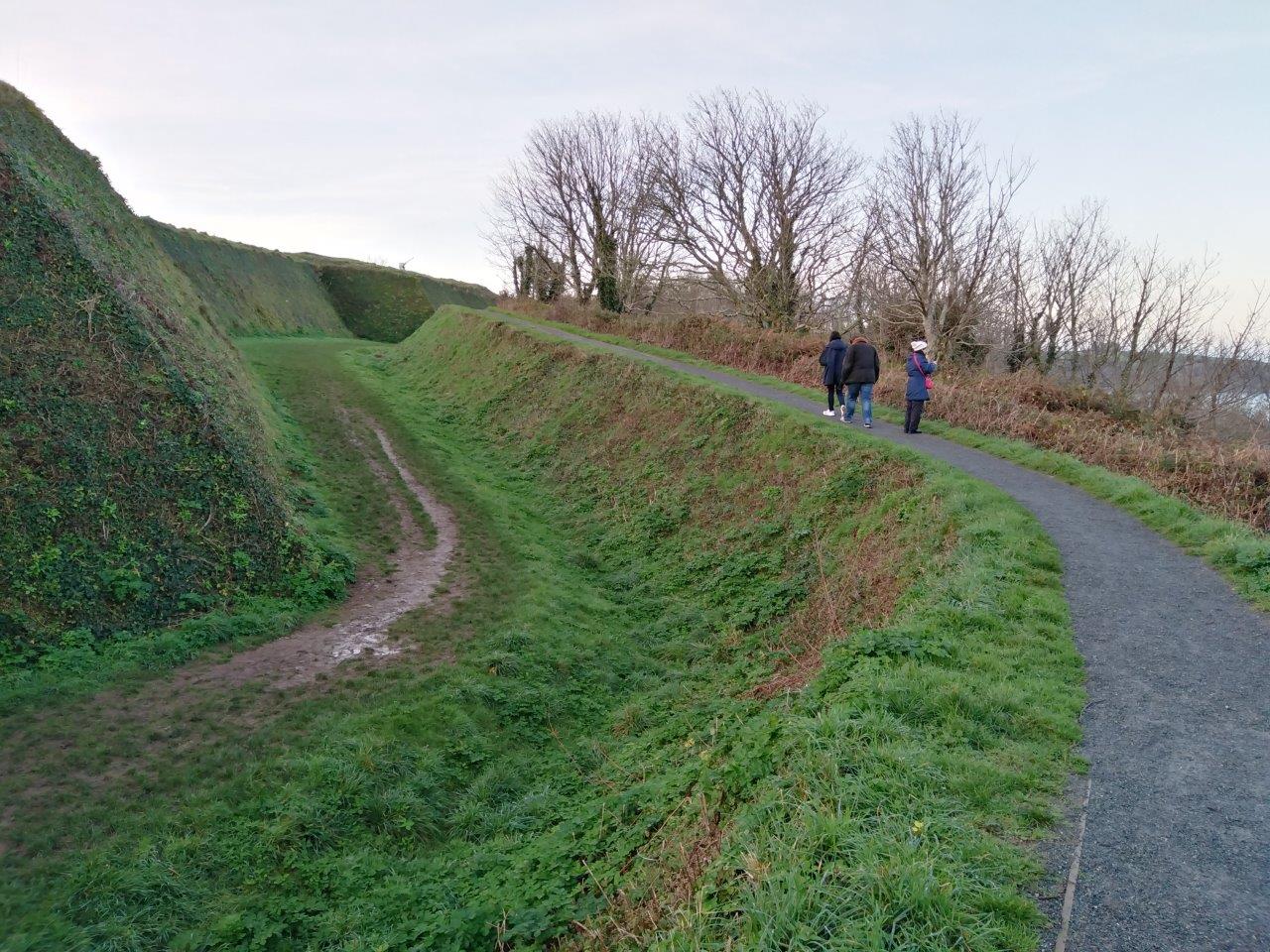
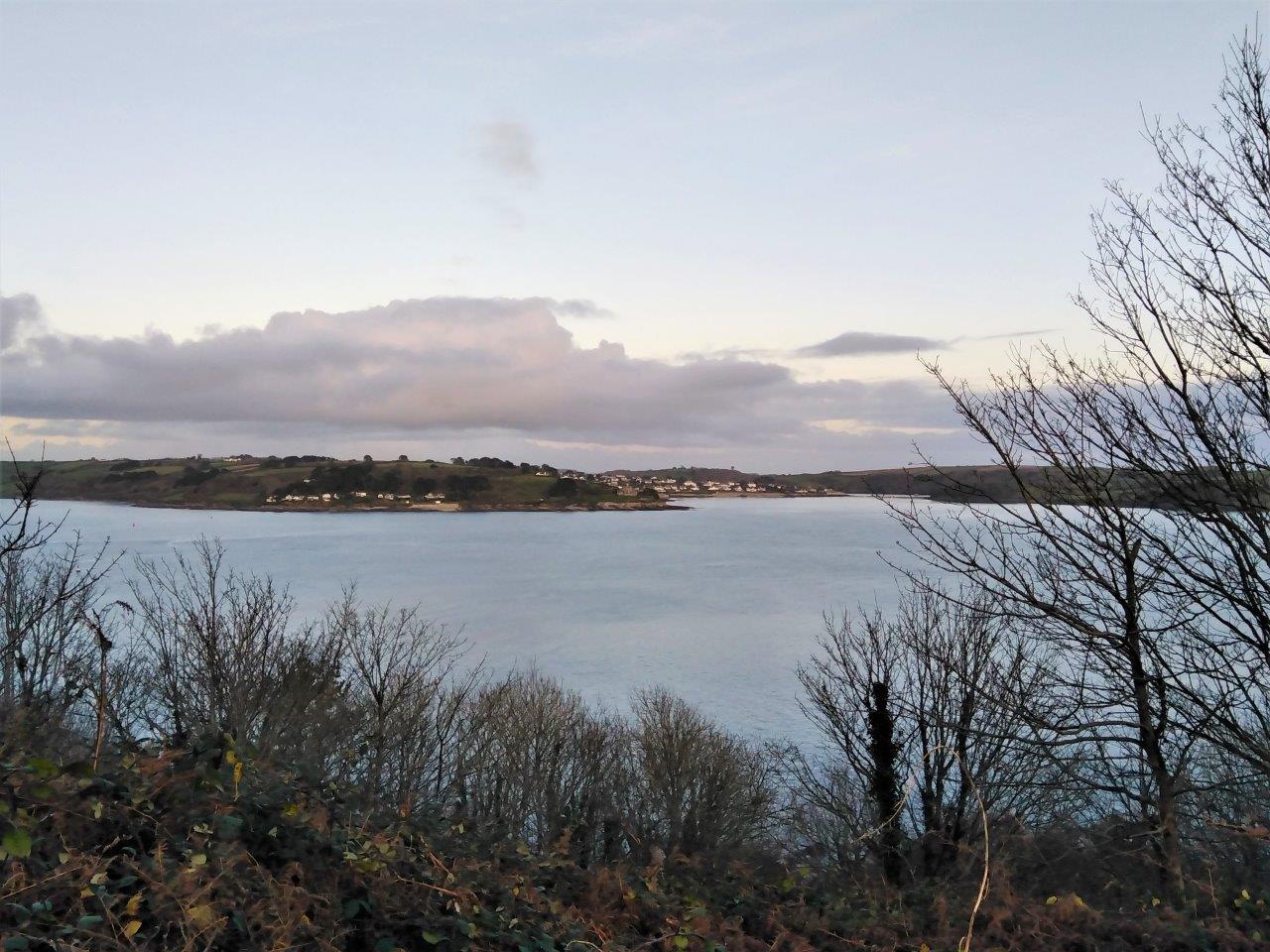
Swanpool Beach
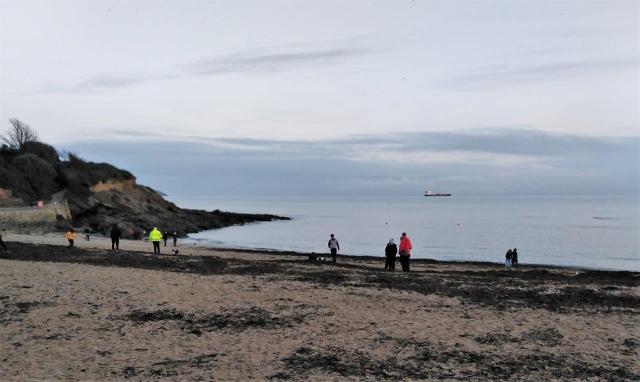
Sitting on the edge of Falmouth, Swanpool Beach is a sheltered shingle beach popular for swimming and paddle boarding.
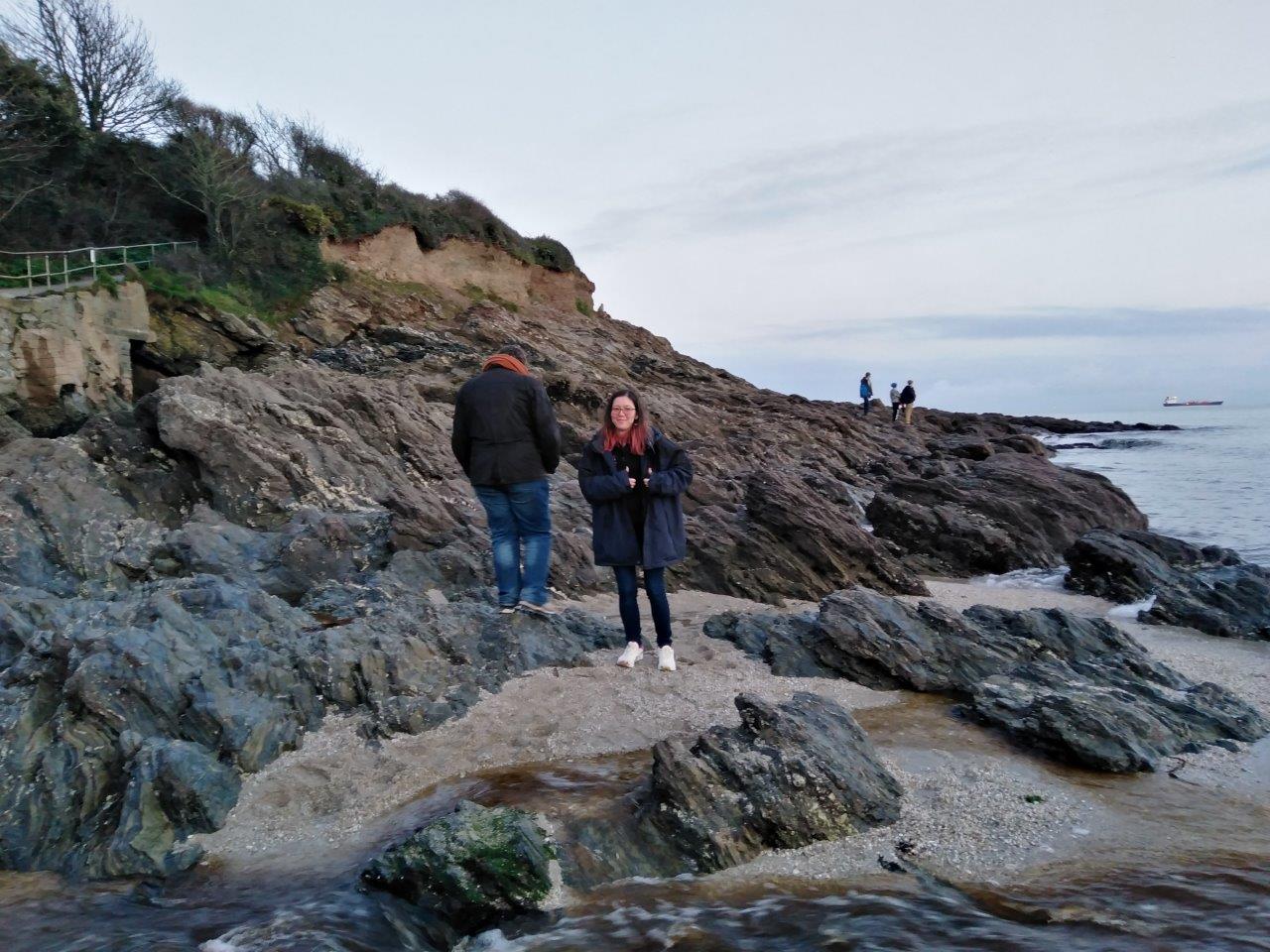

While Claire and Henry explored the rocky outcrop, I was content to watch seagulls riding the surf and dogs being chased by waves.
Swanpool beach gets its name from the Swanpool Lake Nature Reserve located behind the beach. The lake is separated from the sea by the beach and road, and is a habitat for kingfishers, ducks and other coastal birdlife.
